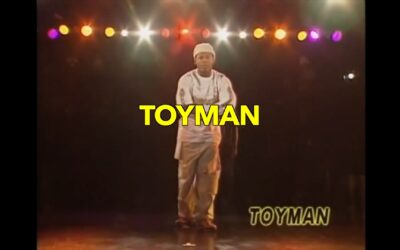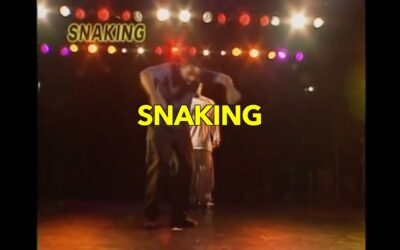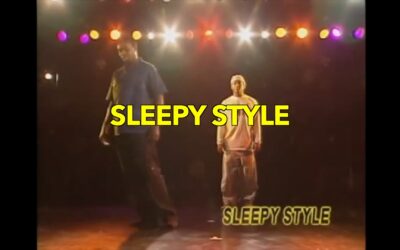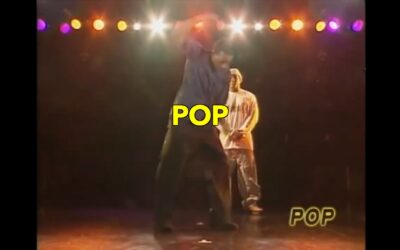Introduction
Tutting, a mesmerizing dance style that transforms the human body into a living, breathing geometric puzzle, has captivated audiences worldwide with its precise angles and intricate hand movements. This unique form of dance, rooted in the funk styles of the 1970s, draws inspiration from the art of ancient Egypt and modern-day technology. Tutting challenges dancers to create complex shapes and patterns using their arms, hands, and fingers, resulting in a visually stunning display of body control and creativity. As a fundamental element of street dance culture, tutting has evolved from its origins in popping to become a standalone art form, pushing the boundaries of what the human body can express through movement.
Video Demonstration
Dance History
Tutting emerged in the 1970s as part of the broader funk styles dance movement, particularly within popping. The name “tutting” is derived from King Tut, referencing the angular poses seen in ancient Egyptian art and hieroglyphics. While there isn’t a single credited creator, the style was popularized by street dancers in California, particularly in Fresno and Los Angeles.
The dance form gained significant traction in the 1980s and 1990s, evolving alongside other street dance styles. As it developed, tutting incorporated influences from various sources, including mime, robotics, and even sign language. The advent of social media and online dance communities in the 2000s led to a renaissance in tutting, with dancers worldwide sharing techniques and pushing the style to new heights.
Step By Step Instruction
1. Start with the basic “box” position: Hold your arms out in front of you, forming a square with your forearms and hands.
2. Practice creating 90-degree angles with your arms, hands, and fingers.
3. Learn to transition smoothly between different angular positions.
4. Incorporate wrist rotations to add fluidity to your movements.
5. Experiment with creating letters and symbols using your hands and arms.
6. Practice isolations, moving one part of your body while keeping others still.
7. Combine angular movements with smoother transitions for contrast.
8. Explore different levels, moving your arms from high to low positions.
9. Incorporate tutting into freestyle movements, blending it with other dance styles.
10. Develop your own unique patterns and sequences as you become more comfortable with the basics.
Tips For Learning
– Start slow and focus on precision before speed
– Use mirrors or record yourself to check your angles and alignments
– Practice regularly to build muscle memory and improve flexibility
– Study geometry and optical illusions for inspiration
– Watch tutorials and performances by experienced tutters
– Join a dance community or take classes to learn from others
– Experiment with different music styles to find your rhythm
– Be patient and persistent, as mastering tutting takes time and dedication
Conclusion
Tutting is a captivating dance style that combines geometric precision with creative expression. By mastering the fundamental techniques of creating angles, transitions, and isolations, dancers can unlock a world of artistic possibilities. As you progress in your tutting journey, remember that the key to success lies in consistent practice, attention to detail, and a willingness to push your boundaries. Whether you’re a beginner or an experienced dancer, tutting offers a unique way to express yourself and connect with the rich history of street dance culture.
More Funk Style Dance Moves
Mastering the Art of Waving: A Fluid Funk Style Dance Move
IntroductionWaving is a mesmerizing dance move that has captivated audiences for decades. This iconic element of funk style dancing creates an illusion of a wave passing through the dancer's body, resulting in a fluid and hypnotic visual effect. Originating from the...
Mastering the Toyman: A Funky Twist on Popping Dance
IntroductionToyman is a captivating and playful dance move within the funk style family, specifically associated with popping. This unique technique transforms dancers into living, moving toys, creating an illusion of mechanical, jerky movements reminiscent of wind-up...
Mastering the Art of Ticking: A Funk Style Dance Move That Will Make You Pop
IntroductionTicking, a mesmerizing dance move that falls under the umbrella of funk styles, has captivated dancers and audiences alike with its precise, robotic-like movements. This unique technique involves isolating different parts of the body and moving them in...
Mastering the Funk: A Comprehensive Guide to Strutting Dance Move
IntroductionStrutting, a cornerstone of funk-style dancing, is more than just a move—it's an attitude, a way of life. This iconic dance technique embodies the essence of confidence, rhythm, and self-expression that defines funk culture. Originating from the vibrant...
Mastering the Snaking Move: A Funky Journey Through Fluid Body Control
IntroductionThe Snaking move is a mesmerizing and fluid dance technique that has become a cornerstone of Funk Style dancing. This captivating movement involves creating a wave-like motion that travels through the body, typically starting from the head and flowing down...
Mastering the Sleepy Style: The Laid-Back Funk Dance Move That’s Taking the Scene by Storm
IntroductionThe Sleepy Style is a captivating and deceptively simple dance move that has become a cornerstone of funk-style dancing. This unique movement, characterized by its relaxed and seemingly effortless execution, perfectly embodies the cool, laid-back attitude...
Mastering the Shadow Box: A Funky Dance Move with Boxing Roots
IntroductionThe Shadow Box is a dynamic and visually striking dance move that originated in the funk style dance scene. This move combines the rhythmic footwork of boxing with the fluid, popping movements characteristic of funk dancing. The Shadow Box allows dancers...
Mastering the Scarecrow: A Funky Popping Dance Move
IntroductionThe Scarecrow is a captivating and distinctive move in the world of funk-style dancing, particularly within the popping genre. This unique dance technique draws inspiration from the iconic character in "The Wizard of Oz," mimicking the loose, puppet-like...
Mastering the Puppet: A Funky Dance Move That Pulls Your Strings
IntroductionThe Puppet is a captivating and iconic dance move that belongs to the vibrant world of Funk Style dancing. This mesmerizing technique creates the illusion that the dancer is being controlled by invisible strings, much like a marionette. The Puppet move is...
Mastering Popping: The Fundamental Move of Funk Style Dancing
IntroductionThe Pop is a foundational move in funk style dancing that has captivated dancers and audiences alike for decades. This iconic movement is characterized by a quick, sharp contraction of specific muscle groups, creating a 'popping' effect that appears to...











Recent Comments